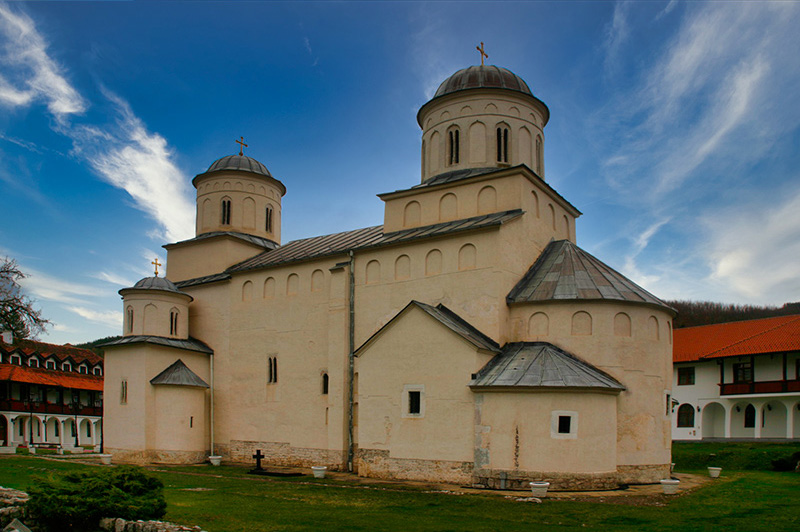Serbian Medieval History
Monastery Mileseva

BLAGO Collection
The Mileseva monastery was founded between 1234 and 1236 by Serbian King Vladislav. The monastery is situated in a valley of the Mileseva river, near Prijepolje.
Mileseva is one of the most important Serbian sanctuaries and spiritual centers. In 1236, Vladislav moved the relics of his uncle, Saint Sava, from Trnovo in Bulgaria, where he died, to Mileseva. The second important event took place in 1377 when the coronation of Tvrtko I as the King of Serbia and Bosnia took place in Mileseva. In the fifteenth century, the monastery was the seat of the Metropolitan Bishopric of Dabar and Bosnia. In 1459, the Turks set the monastery on fire, but it was soon restored. In the first half of the sixteenth century, the first service books were illuminated in Mileseva.
One of the oldest schools also existed in the monastery. In the middle of the century, during the time of Patriarch Makarije (the Serbian Patriarchy was restored in 1557), the monastery was thoroughly renovated. Its external narthex was built and painted and probably cut through the wall between the narthex and the nave. In later times, after several Turkish demolitions, a new restoration was undertaken in 1863, when the church considerably changed in appearance.
The Mileseva monastery has been visited by pilgrims and donated to by Russian Emperors (Ivan IV the Terrible) and Valachian and Moldavian rulers. In 1594, the Turks removed the relics of St. Sava from the monastery and publicly burned them on Vracar hill in Belgrade, making him thus a posthumous martyr.
The Church, dedicated to the Ascension of Our Lord, architecturally belongs to the Raska School. Its ground plan is unique. Its single nave widens from the west eastward, so that the eastern bay is omitted completely, which results in the three altar apses leaning directly on the domed east wall. Inside, the dome is raised on several arches in a stairway-like arrangement. The narthex was added in 1236 upon which, during a nineteenth-century restoration, a dome was constructed on top.
The church was lavishly ornamented with sculpture, especially around the portals and windows, which have unfortunately since decayed.
The first group of frescoes was produced in the 1230s. The other groups include works from the Turkish period, to be found in the exonarthex. These thirteenth-century frescoes may be considered to be the supreme achievement of all the paintings in Europe of that time. The portraiture deals with bishops (altar space), warrior saints and martyrs (nave), as well as monks (narthex). The upper registers in the narthex represent Christ's earthly life. Below the resurrection composition on the south wall of the west bay, King Vladislav is depicted as being led to Christ by the Mother of God. The Nemanjic family is portrayed in the northeastern part of the narthex: Stefan Nemanja as the monk Simon, Sava as the first archbishop, Stefan the First-Crowned as king, and his sons Radoslav and Vladislav. The frescoes in the narthex and the adjacent chapel were presumably painted in the 1230s and 1240s. They illustrate the Last Judgment and the lives of some saints. In the second half of the sixteenth century, the church was repainted with a new layer of frescoes of which only fragments of the Last Supper under the dome and the Forty Martyrs in the north choir have survived. These frescoes were damaged in a fire, but they happened to save (acting like a protective layer) the earlier and more valuable paintings from the thirteenth century.
Others
More Information
BLAGO Content
While the content of the BLAGO Fund collections is free to use, there are also some restrictions on commercial use and proper attribution of the material. Follow the links below for more information.
> BLAGO Collections License
> Image Request
BLAGO Fund also accepts the contribution of material. Please contact us with any material you wish to publish on our website.
Contact
BLAGO Fund, Inc.
PO Box 60524
Palo Alto, CA 94306
USA
info@blagofund.org

